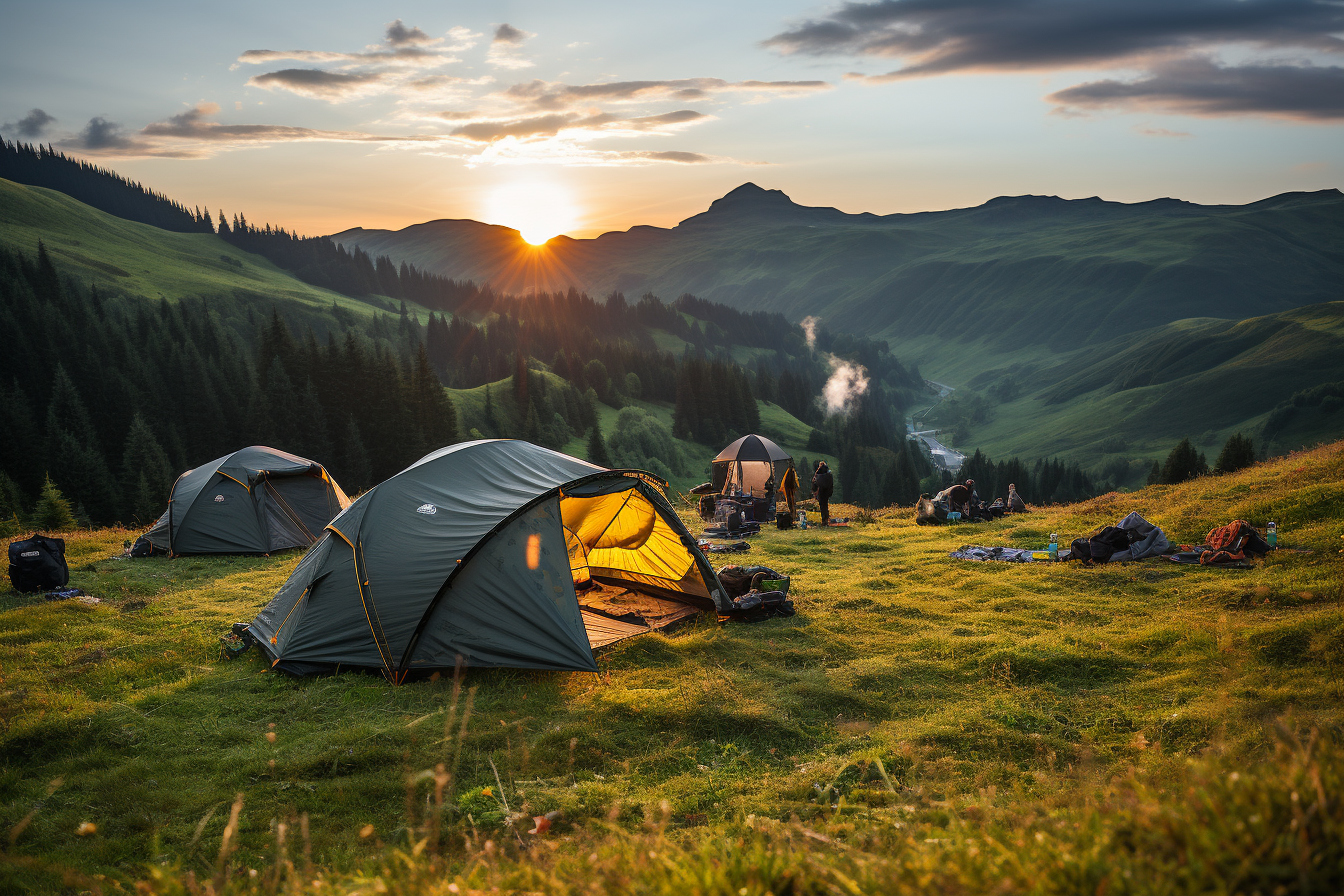Are you a nature and adventure lover, and have you decided to go bivouac in the mountains? Congratulations ! However, to fully enjoy this experience, it is essential to organize your bivouac well to guarantee your comfort and safety.
1. Choose an ideal location
The choice of location is essential for a comfortable bivouac. Look for a flat, open area, sheltered from the wind and ideally near a water source. Also be sure to follow local regulations regarding mountain camping.
2. Prepare good equipment
To have a comfortable night’s sleep, it is essential to provide suitable equipment. A lightweight, durable tent is essential to protect you from bad weather and insects. Opt for a warm and comfortable sleeping bag, as well as an insulating groundsheet to protect you from ground moisture.
3. Dress well
In the mountains, temperatures can drop considerably at night, even in summer. So bring warm clothing suited to the weather conditions. Also remember to bring a change of clothes, warm socks and good hiking shoes for the next day.
4. Plan tasty meals
Food is a key element for a successful bivouac. Prepare balanced and tasty meals that are easy to prepare on site. Opt for light, non-perishable foods such as dried fruits, energy bars and dehydrated soups. Don’t forget to take with you all the utensils you need for cooking and eating.
5. Organize your activities
Take advantage of your stay in the mountains to practice outdoor activities. Find out about nearby hiking trails and bring maps, a compass and a GPS so you don’t get lost. Don’t forget to take binoculars, a camera and a first aid kit just in case.
6. Respect the environment
During your bivouac in the mountains, it is essential to respect the environment around you. Leave no trace of your passage, collect your waste and respect the local fauna and flora. Always put out your fire properly and use a portable toilet to avoid contaminating the water.
7. Avoid the unexpected
In the mountains, it is important to be prepared for eventualities. Check the weather forecast before heading out and stay informed about trail conditions. Always carry a complete first aid kit, a charged cell phone and a backup means of communication in case of need.
Select the right time for bivouac
Beyond choosing the location and preparing the equipment, it is crucial to choose the right time to bivouac in the mountains. Making this strategic choice can allow you to make the most of the experience while avoiding many inconveniences related to weather or site availability.
He is essential to check the weather forecast before planning your outing. Good weather is not only more pleasant, but also safer, reducing the risks associated with bad weather such as torrential rain, thunderstorms, or unexpected snowfall. Careful planning for the weather can help you avoid potentially dangerous situations and fully enjoy the natural beauty of the mountain.
It is also worth consider the season when planning your bivouac. Each season offers a unique experience and presents its own challenges. Spring brings freshness and rebirth of flora, summer offers longer and generally warmer days, autumn is marked by its spectacular colors and a cooler climate, and winter presents a snowy landscape and more difficult conditions. Taking these seasonal variations into account will allow you to better prepare and adjust your equipment accordingly.
The availability and attendance of sites are also important factors to take into account. Opting for less busy periods can help you offer a more serene and intimate experience, allowing you to fully immerse yourself in nature. This can also reduce the impact on the environment, avoiding overcrowding and degradation of natural sites.
Furthermore, it would be wise to learn about local wildlife and his habits. Certain periods may correspond to key moments for wildlife, such as the breeding season or migration. Avoiding disturbing local wildlife during these crucial moments is a responsible and respectful way to bivouac.
Exploration of the surrounding flora
Exploring and understanding the local flora can greatly enrich your mountain bivouac experience. Not only does it allow you to appreciate the natural beauty of the environment, but it can also have practical implications, such as learning about edible and medicinal plants, or identifying poisonous plants to avoid.
Knowledge of local flora can transform a simple outing into an educational and interactive experience. You can learn to identify different plant species, understand their life cycle, their water and light requirements, as well as their adaptation to the specific mountain environment. In this way, the flora becomes an integral part of the bivouac experience, further connecting you to the nature around you.
Mountain flora is often unique and adapted to extreme climatic conditions, and its diversity varies according to altitude. As you rise in altitude, you might observe changes in vegetation types, from dense valley forests to flowering alpine meadows and rocky areas with almost no vegetation.
Furthermore, it is crucial to emphasize the importance of protection of mountain flora. Certain mountain ecosystems are particularly fragile and can be damaged by disrespectful human activities. Therefore, it is essential to follow basic rules such as not picking wild plants, staying on established trails and not leaving trash.
That said, respecting and discovering the local flora adds an extra dimension to your bivouac adventure, making the experience richer and more fulfilling. By taking the time to observe and learn about the plant environment around you, you can gain a new appreciation for the complexity and beauty of nature, while helping to preserve it for future generations.
High Altitude Safety
Immersing yourself in nature in the high mountains is a unique experience, but it requires special attention to safety. At high altitudes, the climate can be harsh and unpredictable, and conditions can change quickly. Oxygen is also scarcer, which can impact your physical condition and judgment.
When you are in the high mountains, it is imperative to be informed of the weather conditions and to equip yourself adequately. Having survival equipment, such as survival blankets, a whistle, and a first aid kit, can make all the difference in an emergency. It is also essential to have thermal and waterproof clothing, as well as a heat source, such as matches or a lighter, to cope with extreme weather conditions.
At high altitude, respecting safety rules and knowing your own limits are essential. You need to know how to listen to your body and recognize the signs of altitude sickness, such as headaches, nausea, and fatigue. If these symptoms occur, it is crucial to descend to a lower altitude and rest.
The risk of accidents also increases with altitude. The terrain is often steeper and rockier, with steep slopes and the risk of rock falls. Caution is advised when crossing these areas, and the use of helmets and other protective equipment may be necessary.
Knowing basic mountain survival skills, such as building a shelter or finding water, is also crucial. Proper preparation and knowledge of the environment can help prevent dangerous situations and ensure a safer and more enjoyable bivouac experience.













